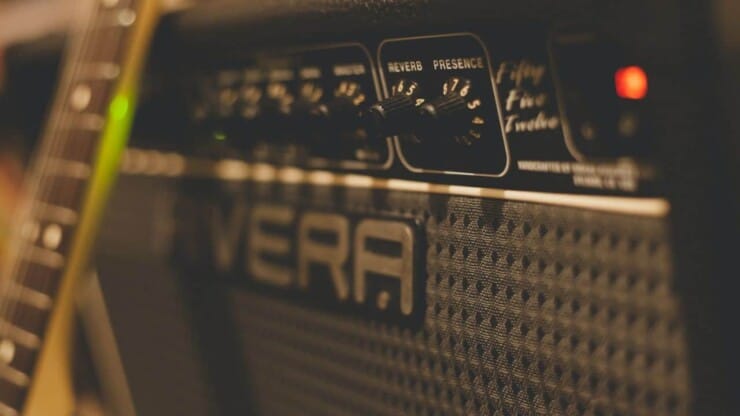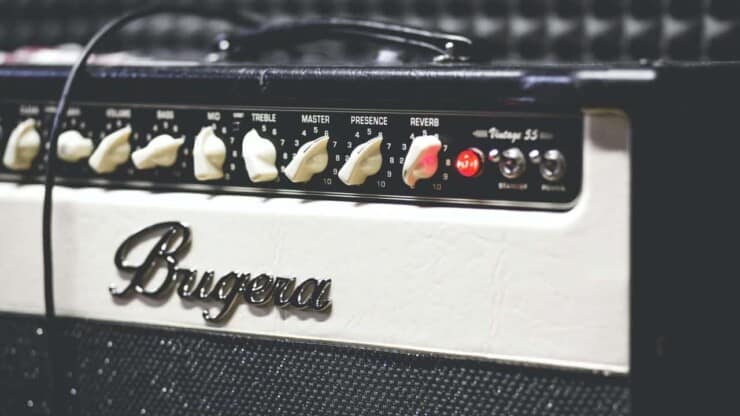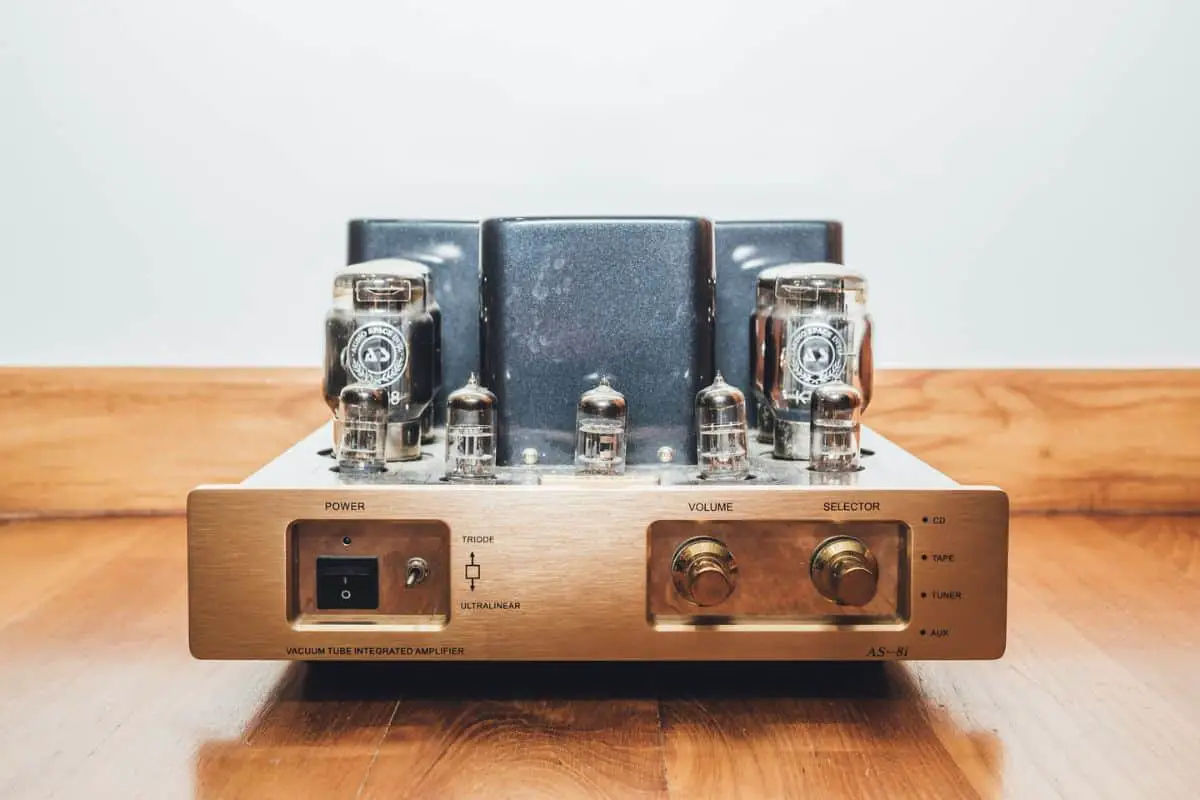Have you been having trouble working your guitar tube amp because you don’t know how it works? If so, then do not worry. By the time you are done reading this article, you will know how does a tube amp work.
Tube amp works by using high positive charges in the cathode in the grid and the flow of electrons amplifies the signal many times over.
In this article, you’ll get to know all about tube amps, what is a tube amp, how does a tube amp work, difference between tube amps and digital amps, why tube amp is better than digital amps, and more. Stick around to get all the answers you’re looking for.
What is a tube amp?
A tube amp is an amplifier that uses vacuum tubes/valves for amplifying the electric signals produced by musical instruments. For electric guitars and basses, these signals are produced by pickups. They are typically of the electromagnetic variety, and they normally pass through the preamp tubes and power tubes of the amp before exiting through the speaker.
To know about tube amps, you will have to know what do tubes do in a guitar amp. A vacuum tube is essentially an electrical component made up of a tube. This tube will come with the air sucked out and will be fitted with different electrical components inside. They will work because the electrons can travel through the vacuum space. This is something that cannot be done easily through non-conductive air. The entire purpose of a vacuum tube will be to control the flow of electrons. Some key components inside the tube will be the cathode, plate, grid, and heating element.
>>> Click here to read our review about the Top 15 Best Tube Amps <<<
How does a tube amp work?
There are a few principles of electricity that will help you understand how does a tube amp work. These will play their individual roles in the operation of the tube amp as a whole. First, you’ll need to understand the relationship between voltage, current, and resistance. This relationship is defined as – V (Voltage) = I (Current) x R (Resistance). In other words, the voltage will be the product of the current and resistance between the ends of the circuit. Say that you are considering current as the amount of water flowing through a pipe. The voltage will be the pressure pushing the water, while resistance is caused by the restriction to this flow.
Secondly, mains electricity will be supplied as AC (alternative current) and it changes direction 50-60 times per second. This electricity will come in the form of a sine wave. However, audio equipment like tube amps normally operate on a steady DC current. Hence, a tube amp will feature a device that converts mains electricity from AC to DC. Then, there will be a transformer for stepping it up and down as needed for supplying it at different voltages to other components.
Power transformer
Although the tubes in the circuit operate at more than 200V, the valve elements need 6.3V AC current for functioning. Hence, the first step will be to step up or down the electricity supply and send it to different circuits.
Rectifier/Diode
The rectifier valve will convert/rectify the AC signal from the supply to the DC signal that the tubes use. In older amps, this was done using a tube/valve rectifier, but silicon diodes have replaced them in modern equipment. The alternating current will have a sinusoidal waveform, but you’ll need a more stable direct current. This is the case as the waveform constantly keeps changing direction, so the rectifier will work by correcting the reversal and producing a unidirectional waveform.
Capacitors
The rectified DC waveform isn’t completely straight. Instead, it’ll look more like a pulsating waveform. Capacitors will act like dams on a river, as they’ll store the charge and release it in a steady form. This will smoothen out the ripples in the flow. The capacitors will continue storing a lethal dose of charge even if the tube amp is switched off. Because of the high voltage involved, this charge will be lethal. If you accidentally touch the wrong places, the charge could be dumped inside your body. This is why only trained techniques must open and tinker with tube amps.
The high DC voltage of the capacitors will go to the plates in the tubes. This requires a high positive potential for attracting electrons from the cathode. If current regulation or voltage is needed down the line, it’ll be accomplished by using resistors.
Resistors
Like a construction in a pipe, resistors are used for controlling and reducing the current and voltage in the system. They will dissipate electrical energy depending upon the resistive values, whose units are ohms.
Older tube amps feature more character and personality, as they made use of older resistor technology. Carbon-comp resistors add noise to the system, producing the vintage sound that everyone loves. Some modern manufacturers also use clean metal film resistors, giving a truer signal but with less character. If you’ve ever built your own tube amp, or you want a technician to help you experiment, you should suggest changing the resistors in the output stages of the circuit.
Preamp tubes
Many valve amps have multiple steps of tubes – power tubes and preamp tubes. The preamp tubes are the first set of tubes to receive the guitar pickup signal. Their work will be to pre-amplify the guitar signal to a level that applies to the larger power tubes. Moreover, they will also drive reverb or tremolo effects.

One of the most common types of preamp tubes is the 12AX7 preamp tube. The “12” in the specification is used for indicating the amount of heater voltage they consume. However, different manufacturers will produce them in different ways. The most common 12AX7 tubes feature a gain factor of 100, making them one of the most powerful options around.
The most important task of preamp tubes is to give the character to the input signal. They will add rich harmonics sustain, and distortion to the sound at high volumes. It is widely referred to as overdriving the preamp. Preamp tubes usually contain three parts – cathode, anode, and grid.
Power tubes
Power tubes are a comparatively larger type of valve, taking the preamp signal and amplifying it to speaker levels. Meanwhile, the preamp will amplify signals to line level. They’re usually pentodes or five-part designs, adding more screens to the major components, which helps with electron flow control.
Examples of pentode power tubes are the EL34s and EL84s, whose performance is comparable to that of solid-state components. The power tubes will be controlled by the maser volume dials for varying the volume levels. However, they will not color the sound output quite like the preamp tubes.
You can always swap out the preamp tubes and power tubes for experimenting with the ones from different manufacturers. This will give you the freedom of playing with different types of sound characteristics, from a clean sound to all-out distortion. Ultimately, this will depend on your preferences. However, you should be careful when swiping the tubes. You shouldn’t swap out hot tubes, and be careful that you follow the manufacturer guidelines while doing that. Avoid forcing the tube in or out. Moreover, keep a technician to do it for you if the chassis has to be removed for changing the tubes.
Vibrato Oscillator
One of the ways that tube amps will add color and texture to sound will be through the vibrato oscillator. The correct technical term will be a tremolo oscillator, but Fender started referring to it as vibrato, and it stuck. A tremolo is actually a form of slow amplitude modulation. It is an effect where low-frequency waves are used for altering the audio signals in frequency and amplitude. The wave is inaudible, but the effects it is causing on the output sound waves are tremendous.
Tremolo is made with triangular or sine waves, meaning another circuit should be added for creating and controlling these waves. An amp or pedal device for tremolo is required for altering the speed and depth of the alterations. It’ll also control the sound signal’s linear rise and fall.
Output transformer
The output transformer will take the signal from power tubes, converting it into the impedances and voltage for the speakers. Given that the tubes will output hundreds of volts, it’ll blow the speakers if connected directly. Meanwhile, the output transformer transfers the signal load without major alterations to the tone and color of the sound output.
Different types of power amp tubes in a tube amp
A tube amp is largely characterized by the types of power amp tubes that it is using. Vacuum tubes weren’t actually built for musical amplifiers. They’re found in all sorts of 20th-century electronic devices, but some models produce more musical sounds than others. Here are some of the more popular power amp models –
- 6L6 – These are popularly known as “high headroom” tubes. This means that they get quite loud before they begin distorting. 6L6 tubes are normally found in Class A amps, but they’re also utilized in Class AB amps. 6L6 tubes are closely associated with large Fender amps like the Deluxe, Tremolux, and the Hot Rod.
When players mention the “American” tube sound, they’re often referring to Fender amps with a 6L6. Mesa/Boogie amps use a variation of the Fender circuitry and are strongly associated with the 6L6 as well.
- 6V6 – A close cousin to the more popular 6L6 and another “American” sounding tube. The 6V6 tube will distort or “break up” at lower volumes compared to the 6L6. It makes them extremely popular among guitarists playing single notes high on the neck. On the flip side, when compared to the 6L6 tubes, they produce less precise bass tones at high volumes. While they’re great for blues, country, and classic rock, they would not be the best option for heavy metal riffing.
- EL34 – If the 6L6 is considered to be the classic “American” power tube, the EL34 will be the classic “British” tube. This will be due to its strong association with British amp companies Marshall and Orange. But it isn’t just British players like the legendary Jimmy Page who got their sound from EL34s. Guitarists like Slash and Angus Young are synonymous with the Marshall amps and the EL34s driving them.
- EL84 – Another “British” tube that is highly popular in amps from America, Japan, the UK, and China is the EL84. The EL84 essentially drives the Vox AC30 (think Peter Buck, The Edge, and Brian May) and is widely considered to be a popular choice for Class A amps. They’ll distort readily when the volume is pushed, and it quickly creates creamy saturation.
- 12AX7 – Many amps, especially the ones made by brands like Bogner and Mesa/Boogie generated distortion from their preamp circuitry. However, there is far less variation in preamp tubes across different models of amps. The 12AX7 is a great standard preamp tube, but its function will vary greatly depending on the amp’s circuitry.
Are Digital Amps a viable alternative to Tube Amps?
Digital Audio technology has definitely taken massive leaps forward lately. Today’s digital software are capable of emulating the great sound of tube amps with impressive accuracy. Brands like Tech 21, Zoom, Headrush, Kemper, and Line 6 have created digital modelers that allow you to dial in the sound of the Fender, Vox, Marshall, Orange, and Mesa/Boogie all on a single device.
Many digital modelers are housed inside the stompbox pedals. This will allow touring guitarists to travel without amps. Instead, they’ll plug stompbox digital amps into the venue’s PA system and get amp-like tones without an actual guitar amp.
Computer software has also embraced digital amp modeling. Digital Audio Workstations like Logic, ProTools, Cubase, and Digital Performer contain guitar amp effects. They’ll allow composers to plug the guitar directly into the computer and produce amp-like tones. Free programs like GarageBand will offer these features, and they’ll produce surprisingly good sound.
Tablet and smartphone software contain a selection of amazing digital amps. A few brave guitarists have performed at concerts by plugging the guitars directly into an iPad or iPhone. It’ll let specialized apps get a great sound while sculpting the tone.
Do digital amps sound as amazing as genuine tube amps? No, they don’t. However, they do come closer than they once used to. When you’re factoring in considerations like portability and price, they’ll make total sense for different types of guitarists.
Why tube amp is more popular than digital amps among guitarists?
More often than not, the musicians have to ask themselves why tube amp over digital amps? This is the first decision that you should make when looking to get your hands on the right amp. It’s important to consider whether you want to buy a tube amp or something digital, also known as solid-state amps.

The truth is, there isn’t actually a right or wrong answer. The most important thing that you can do is test things for yourself. You should give both of these amp types a try, and it’ll help you determine the right option for you. This is ultimately a personal quest, and the guitarist needs to feel it.
Digital or solid-state amps are great for guitarists who are looking for maximum headroom (loud, clean, and undistorted signals). Without a bit of natural distortion, an electric guitar could sound slightly brittle. As such, solid-state or digital amps are far more popular with keyboard players than they’re with guitarists. Most guitarists prefer using tube amps for their rigs.
Jazz players, many of whom love playing with almost no overdrive, seem to favor solid-state amps. This is largely due to tonal reasons, but it’s also because solid-state amps are lighter than tube amps. Many guitarists value the high convenience of a light amp.
Rock musicians also prefer using solid-state amps. In fact, Andy Summers of The Police is popular for his incredible use of the Roland JC-120 Jazz Chorus amp. This is unapologetically a solid-state amp. John Fogerty’s guitar leads on Creedence Clearwater Revival records were largely achieved using a Kustom solid-state amp. Meanwhile, Jonny Greenwood of Radiohead prefers using tube amps to get clean tones. Meanwhile, he also uses a solid-state Fender Eighty-five to get distorted tones. This is almost the opposite of what most guitarists would do.
Conclusion
Thank you for reading. Hopefully, now you know a lot more about tube amps, what is a tube amp, how does a tube amp work, the difference between tube amps and digital amps, why tube amp is better than digital amps, and more. A tube amp works by using high positive charges with the flow of electrons, amplifying the signal many times over. A vacuum tube is an electrical component made up of a tube. This tube comes with the air sucked out and are fitted with different electric components inside.



